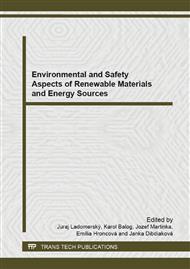p.187
p.194
p.201
p.262
p.267
p.272
p.276
p.282
p.288
An Analysis of Factors Affecting Available Safe Escape Time
Abstract:
This paper deals with some of the parameters that affect the available safe evacuation time (ASET), including fire growth rate, enclosure area, and thermal properties of the bounding construction. Although the available safe escape time is a crucial design parameter, it is, or has to be, often generalised to cover a range of scenarios; this is also the case of design codes. It is therefore necessary to be aware in which aspects such generalisation is possible. A set of computer model cases, carried out in CFAST, is analysed and the effect of individual variables quantified. As real fires usually grow exponentially with time, the t2-fire model was used, employing the standard fire growth rates. By analysing the computer model scenarios, it was found that increasing the size of the enclosure does not bring proportional growth of available safe escape time. It is the rate of fire growth that is the primary factor affecting the safe available escape time. Two different smoke layer height tenability criteria – 0.9m and 1.5m – are also compared; the first derived from literature and the latter represent a more conservative estimate.
Info:
Periodical:
Pages:
267-271
Citation:
Online since:
August 2014
Authors:
Price:
Сopyright:
© 2014 Trans Tech Publications Ltd. All Rights Reserved
Share:
Citation:


